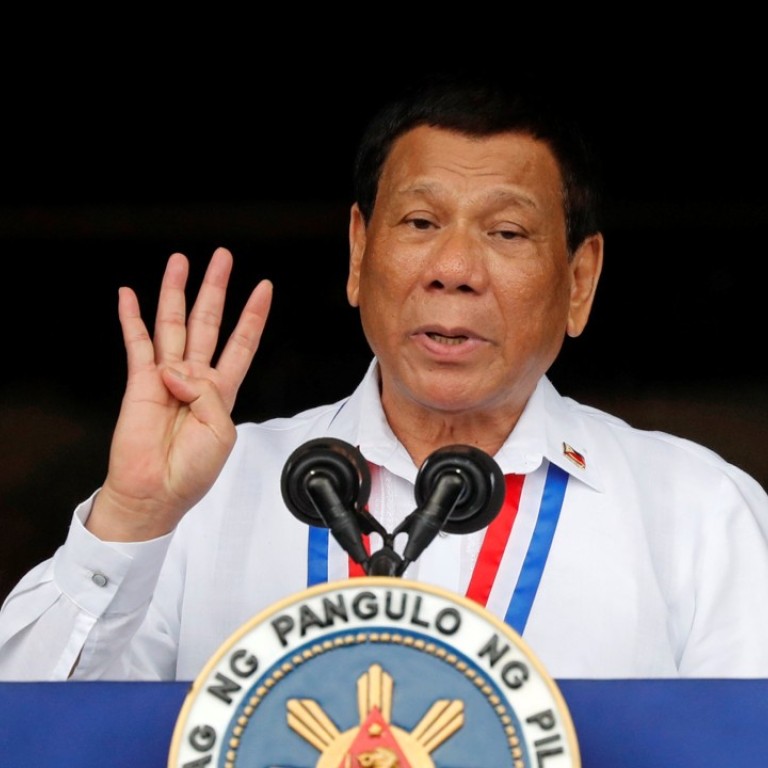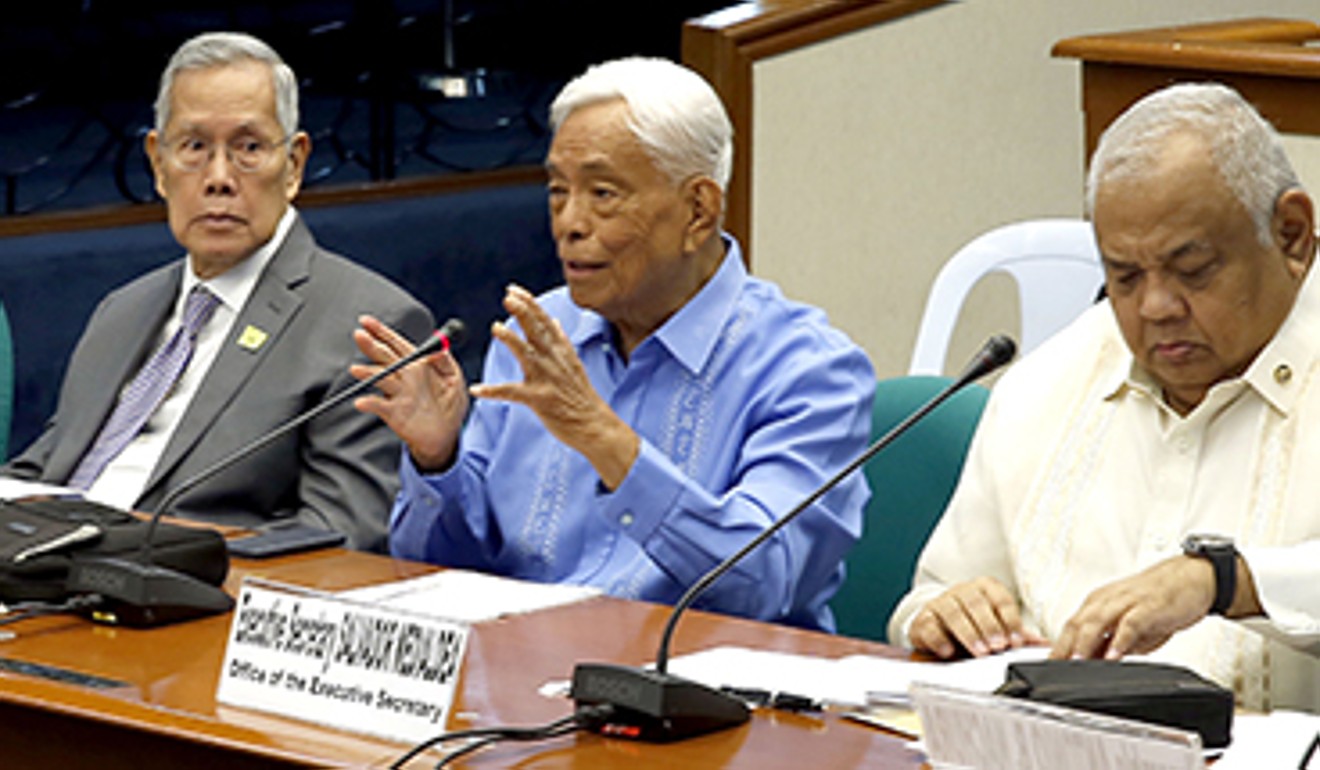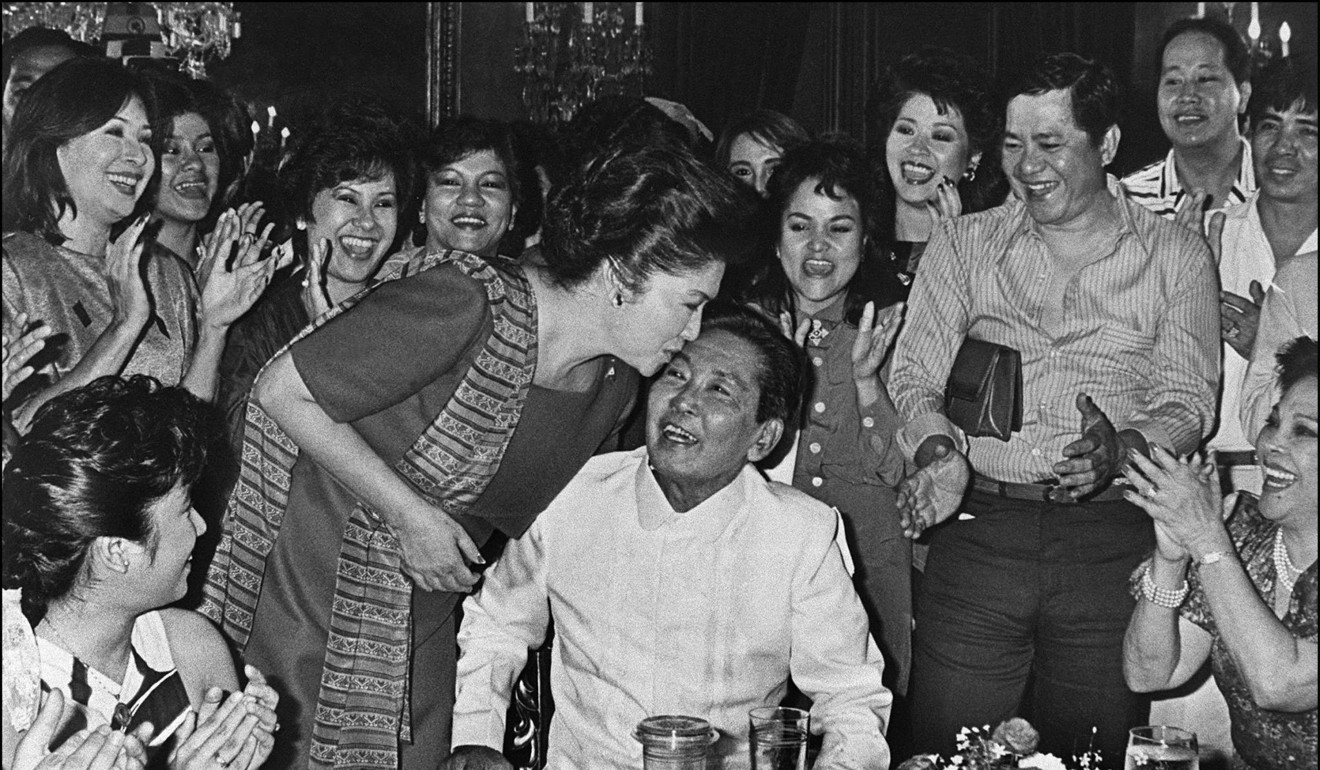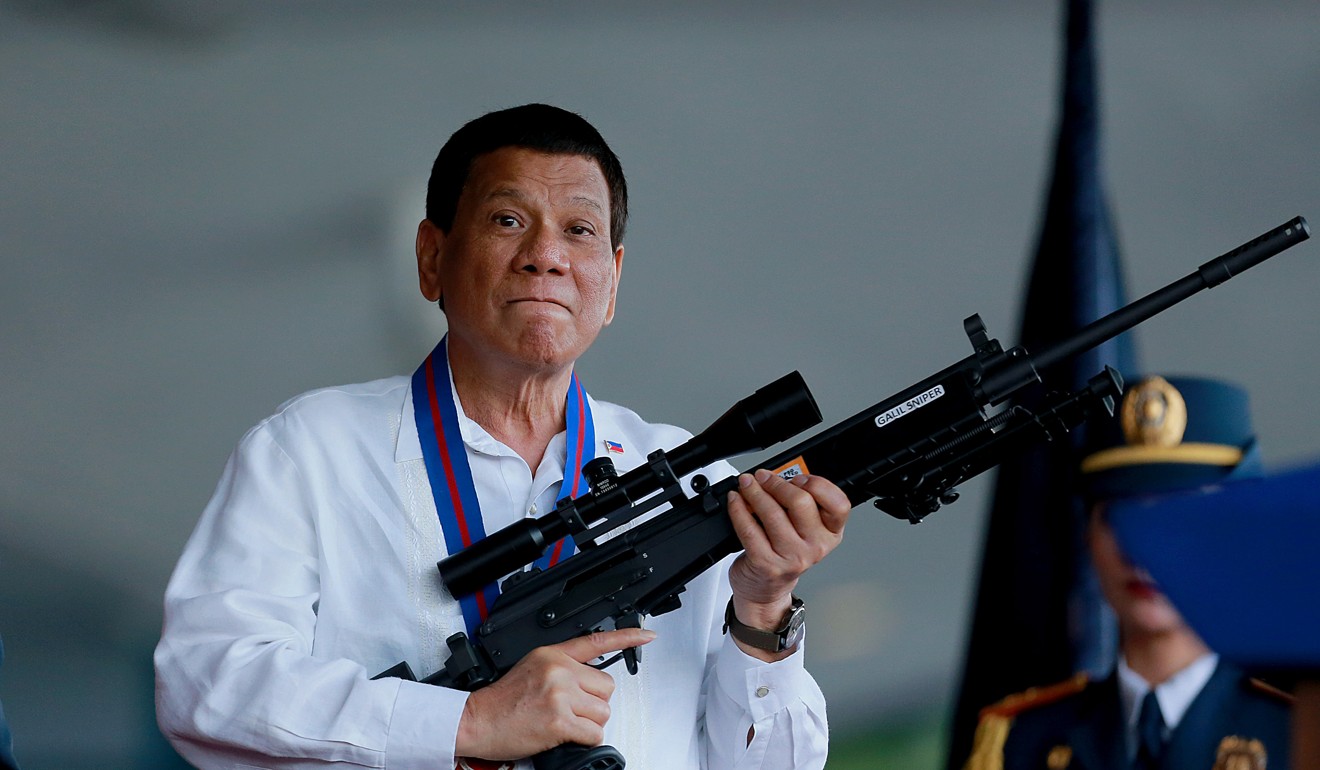
Draft constitution proposes giving Philippine President Rodrigo Duterte sweeping powers that could let him rule indefinitely
Duterte has said that he would not seek a second term under a new constitution
The draft of a new Philippines constitution that was to be submitted to President Rodrigo Duterte on Monday would grant him sweeping new powers, including rule by decree, a member of the drafting committee said.
Such powers could allow Duterte to stay in power indefinitely, just as late strongman Ferdinand Marcos did, a separate constitutional expert said.
However, Duterte’s spokesman said the president wants a new leader elected before the change to cut short his presidency.
Aquilino Pimentel Jnr, a member of the 22-member drafting panel, confirmed Duterte was being given decree-making powers.
Initially, he said such powers were different from those wielded by Marcos “because we are not under martial law” and “it is only during the transition period” that Duterte could exercise these powers.
However, when reminded that Marcos had used his decree-making powers to extend his term indefinitely and legitimise this with a new constitution, Pimentel replied: “That’s not good. We overlooked that. I agree with you [that the term ‘decree’ has vast implications]. That’s not good.”
Constitutional expert Christian Monsod, who is critical of the draft, pointed specifically to Article XXII of the document, on “Transitory Provisions”.
It provides for a Duterte-appointed 10-member Federal Transition Commission to be chaired “by the president”.
This commission would “formulate and adopt a transition plan for the orderly shift to the new system of government”.

The commission is slated to exist until 2022 – when Duterte’s single term is due to expire – but nothing in the draft constitution states what would happen should the transition take longer than that. Duterte has power to decide what to do, using his decree-making powers.
Duterte, 73, said last week that he would not seek a second term under the new constitution, as he sought to counter suspicions he might seek to thwart the Philippines’ single-term limit.
“Make my term conterminous with the beginning of the draft constitution,” Duterte said in a speech in his hometown, Davao, suggesting his term would end when the new charter came into force.
“Make the changes now. Make me resign or ask me to step down,” he added.
Speaking on Monday, Duterte’s spokesman Harry Roque said the committee agreed to his request and would rewrite a provision allowing the president to step down early.
Roque quoted Duterte as saying, “It’s to remove all suspicions and I am tired. Ready to give it to somebody else.”
Roque said Duterte is ready to step down as early as next year if the new system is approved.
Duterte vows to resign if anybody can prove God exists
But to implement the transition plan, Monsod noted, the Transition Commission chaired by the president is given sweeping powers, among them, the power to issue decrees, executive orders and proclamations which have the force of law.
In other words, whoever is president can make their own laws.
Monsod, a framer of the current 1987 constitution, warned these were the same powers that Marcos gave himself with the 1973 constitution, wielding them to become president for life.
“Marcos is all over the place” in the new draft charter, Monsod said.
In the case of Duterte, “it is only a new constitution that allows him to stay in power beyond 2022,” Monsod said.

Julio Teehankee, a De La Salle University political science professor who also sat on the drafting panel, said on national television that the draft charter would let Duterte run again in 2022.
Teehankee said: “All elected officials will have four years, with one re-election, for a total of eight years, from the president all the way down.”
But the present constitution gives Duterte only a single six-year term, ending in 2022.
Is Philippines’ Rodrigo Duterte tough on corruption? Not for the slew of fired officials that he rehired
Ironically, Pimentel was also a delegate to the 1972 Constitutional Convention that legitimised the Marcos dictatorship. But because he had refused to back Marcos, the dictator jailed Pimentel briefly.
Pimentel co-founded the anti-Marcos PDP-Laban Party, which fielded Duterte as presidential candidate in 2016 because he promised to put federalism in place.
Pimentel promised to “try to talk” to his colleagues in the drafting committee to remove the word “decree” from the draft charter.
But he added that even if the draft charter allowed Duterte to run again and prolong his term, “I know he will not do that”.

Asked how he knew, Pimentel replied: “The probability is not there because he personally told me he is going to end his term. As a matter of fact, he wants to announce his resignation right after the plebiscite is done.”
Changing the Philippines’ form of government to a federal system was one of Duterte’s election promises.
He wanted regions outside Manila to have more political and taxing powers to lessen the “Manila-centric” nature of progress and development.
Philippine President Rodrigo Duterte tells UN expert ‘to go to hell’ in warning against interference in domestic affairs
When asked in one interview what model of federalism he wanted, Duterte said he preferred the “Singapore or Malaysian model”.
But the Malaysian model of federalism, according to Professor Paul Hutchcroft of the Australian National University, was “far more centralised” than the current form of government in the Philippines.
In his study of political systems in Southeast Asia, recently published by the Ateneo de Manila University, Hutchcroft wrote that “Malaysia is the only federal system in Southeast Asia [and] it is also one of the region’s most centralised polities – far more centralised than either unitary Indonesia or (especially) unitary Philippines.”
He noted that far from giving regions a bigger say, “in the highly centralised federal Malaysia, those in resource-rich states frequently complain about being short-changed by the federal government in Kuala Lumpur.”
Philippines’ top judge Maria Lourdes Sereno ousted after clashing with President Rodrigo Duterte
He concluded from his study that “the adoption of a federal system, therefore, does not guarantee a movement toward greater decentralisation.”
It could even lead to a greater concentration of power.
The draft charter that was to be presented to Duterte Monday would scrap the 1987 Constitution and replace it with a Federal Republic of 18 federal regions, each with a governor, regional assembly and regional Supreme Court.
The Federal Republic would still be presidential in character with a bicameral congress. The main changes are that members of the Senate would no longer be elected on a nationwide basis, but on the basis of two per region.
Also, a vote for the president would be considered a vote for the vice-president.
Drafting committee spokesman Ding Generoso confirmed that the draft charter would also relax present constitutional restrictions on foreigners leasing and owning land and mining.
He said it would “strengthen” the citizens’ Bill of Rights, with safeguards against surveillance and the addition of ecological and environmental rights.
Generoso said he did not know why the president would be empowered to issue decrees during the transition period.
Additional reporting by Reuters and Associated Press

